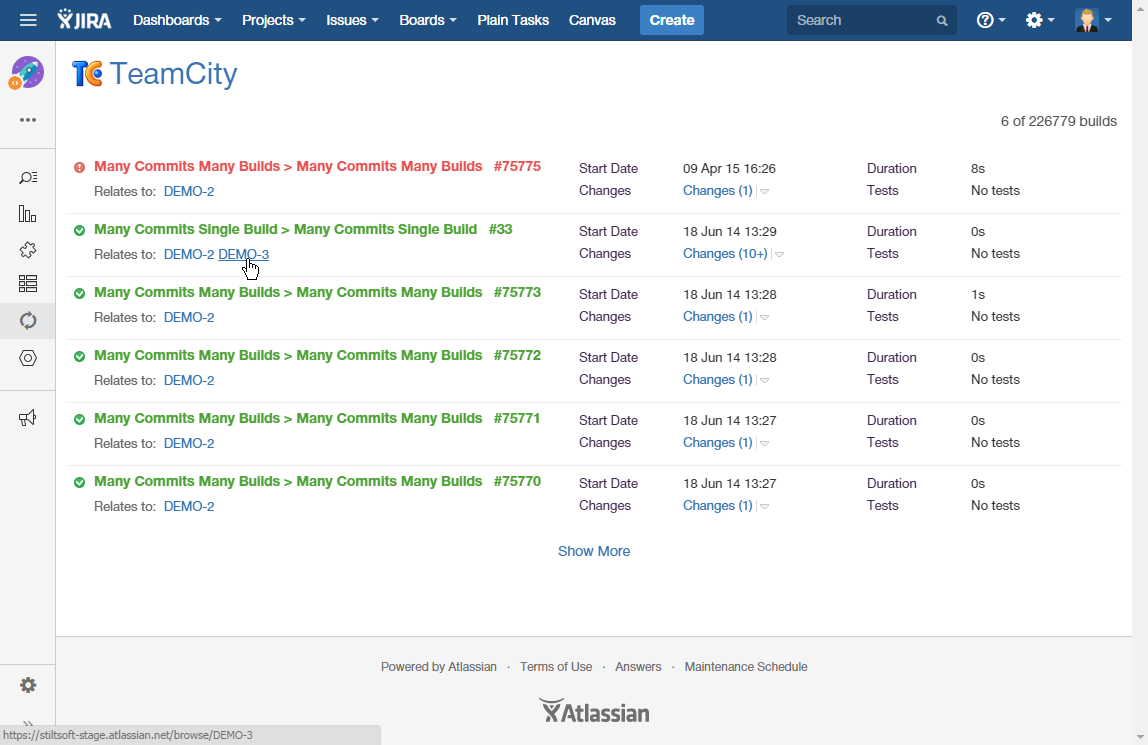
Only after digging further did I then discover that this plugin has a known limitation which means it only detects NVM properly when running on Linux (at the time of writing there are currently several open issues on the GitHub repo about this). With NVM installed, I attempted (sensibly, one might conclude) to use the NVM runner from Eugene Petrenko’s plugin, but was a little confused to find my builds wouldn’t run on the new agent and was greeted with the explanation that NVM was an ‘unmet requirement’ not just within my default pool of 2 existing agents (as expected), but also on my new agent shown at the top of this image:
Teamcity versions windows#
So we created a new TeamCity agent and installed the Chocolatey NVM for Windows package, so that our builds would be freed from the shackles of NodeJs v4.5.0: One thing to mention is that there is not feature parity between these 2 tools. NVM comes in 2 flavours: the original NVM bash script which runs on Unix variants (Mac/Linux), and then there is NVM for Windows, developed using the Go language. My front-end colleagues pointed me in the direction of Node Version Manager (NVM) which they would use during local development in order to avoid a fixed NodeJs dependency. Such is the pace of the front-end development ecosystem, there were new front-end libraries being adopted within the industry which required more recent versions of NodeJs, and yet we were tied to a hard dependency on 4.5.0 which was installed on our build agents. (version 9.x had been released in late 2017). So after we’d been running many builds happily using the approach described above, we came to realise that NodeJs 4.5.0, released in August 2016, was getting rather out of date. Intermediate Level: Variable Node Version Note that the runner types used are generally the ones from Eugene Petrenko’s plugin that I mentioned – these worked well enough at this stage. But be aware that if you are using Grunt, you’ll need the Grunt command line to be available to your build, either by adding an initial NPM runner step which does an “install grunt-cli”, or by installing it globally ( Warren Buckley covered this approach in a helpful post whilst at Cogworks) *Again could be Grunt if that’s what you use. So the front-end elements of our build process followed this sequence: I’ve previously written about how we setup our TeamCity instance, and mentioned Eugene Petrenko’s TeamCity plugin for running Node.js, NPM, Gulp and Grunt. With NodeJs and NPM installed as pre-requisites on all the agents, it was then fairly straightforward to add steps to our build configuration which invoke the Front-End pipeline. The following line from this script installs NodeJs v4.5.0, which in turn brings Node package manager (NPM) v2.15.9 along for the ride:
Teamcity versions install#
To accomplish this, we have a batch script which uses Chocolatey to install dependencies on agents. We installed a particular version of NodeJs on all our TeamCity build agents. So in the early days of our build process, things were nice and simple.

Welcome to the Inferno… Beginner Level: Fixed Node Version I’ve lost countless hours Googling, reading StackOverflow posts and mailing list discussions to get to the bottom of all manner of bugs, caveats and gotchas, so it felt right that I share my experiences. The reality is that getting this all working definitely isn’t the well-trodden path that I expected. Layered on top of that you then have Node, NPM, Gulp and all the various package dependencies that your particular pipeline and solution brings in. However, the first issue to understand (and one of the primary factors in what’s to follow) is that all of our back-end work is done on the Microsoft stack, and so our TeamCity Agents are Windows Server VM’s. In theory, this should be straightforward if you’re using TeamCity – it’s a powerful and flexible product.
Teamcity versions software#
*Most of what’s in this post probably applies equally to Grunt.ĭon’t have a centralised build server set up? I strongly recommend you buy a copy of Continuous Delivery: Reliable Software Releases through Build, Test, and Deployment Automation to understand not only build automation, but further techniques to improve both speed and quality of your software releases.

You’ve worked hard to perfect all that lovely unit testing, linting, CSS precompilation and so on in your Gulp* build, so this part of your software packaging process should be a first-class citizen in your automated build process. If you’re building Web applications using TeamCity, you’re probably going to want to execute your Front-End pipeline as part of the build.


 0 kommentar(er)
0 kommentar(er)
